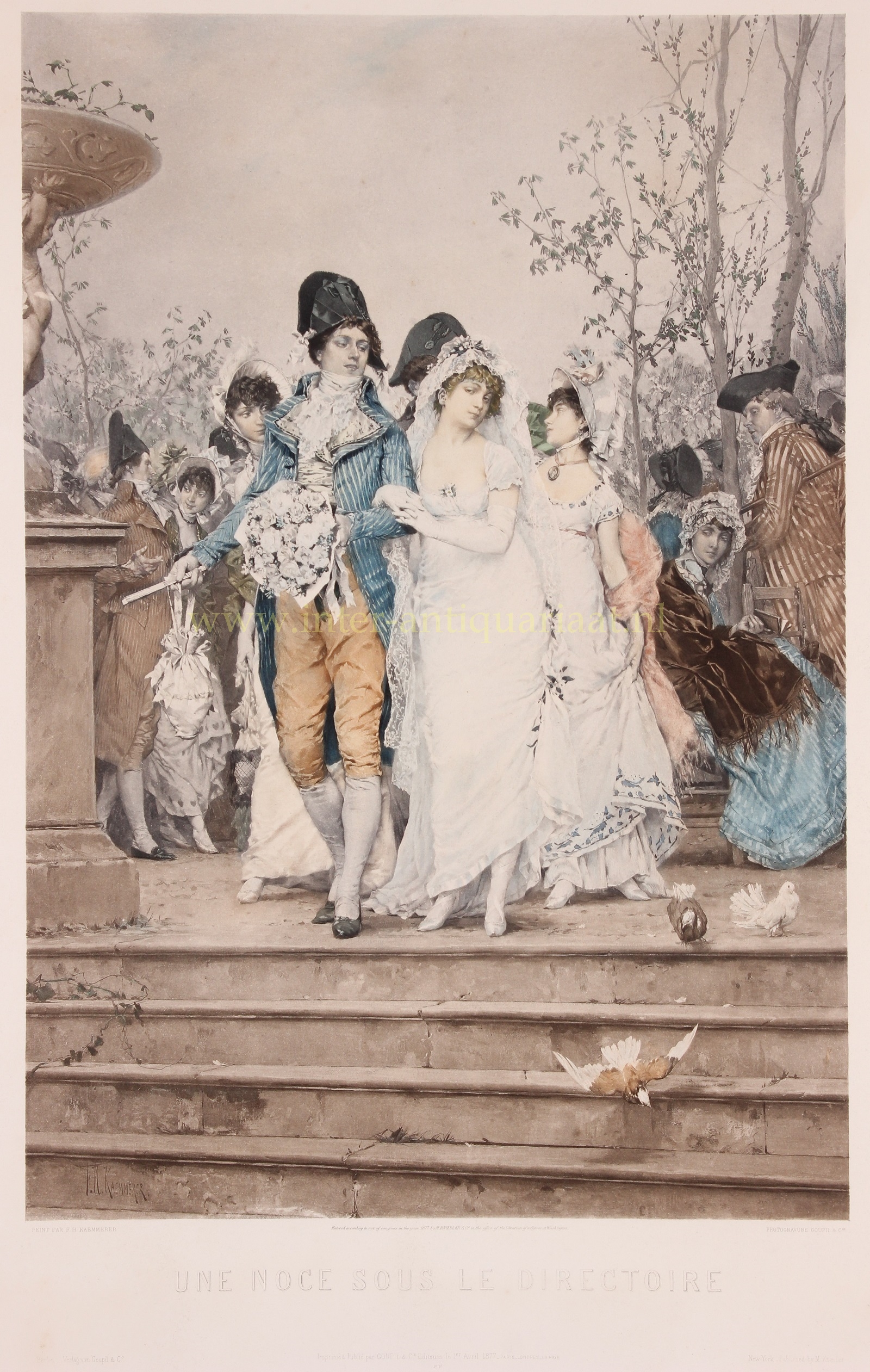“Un noce sous le Directoire”, photogravure made by Goupil & Co. after the painting by Frederik Hendrik Kaemmerer, published by M. Knoedler & Co. in 1877, with original hand colouring. Size (paltemark): 69,2 x 46,6 cm.
We see a wedding during the French Directoire, the period after the French Revolution between 1795-1799. A newly married couple stands at the top of a staircase, the groom wearing a bicorne has his young wife on his arm, a bouquet in one hand, her handbag in the other, behind them a merry company of wedding guests. Life smiles at them.
Classical scenes such as this hark back to the period at the end of the 18th century. Parisian society was depicted in all its frivolity, with its elegant dresses and extravagant costumes. They were much loved by wealthy American and European collectors of the day.
Kaemmerer assembled an impressive collection of 18th century period dresses and accessories, which he used as props for his paintings. With the support and encouragement of art dealer Goupil, Kaemmerer became one of the most famous costume painters in Paris at the time.
A watercolor drawing of this scene by Kaemmerer was (until 2011) in the collection of the Dutch royal family.
Frederik Hendrik Kaemmerer (1839-1902) grew up in The Hague. He studied at the Royal Academy of Art and was a student of Salomon Verveer, who trained him in the romantic tradition.
In 1865 Kaemmerer exchanged The Hague for Paris, attracted by the artistic innovations that took place there. He received a classical education at the Académie des Beaux-Arts. He studied under Jean-Léon Gérôme and switched to academism, but still with romantic roots. For a while he specialized in genre pieces in a French, eighteenth-century setting. He achieved success painting elegant ladies in frivolous silk dresses with bows and ribbons, accompanied by courteous men with bicornes on their heads. In 1870 he exhibited for the first time in the Paris Salon and in 1874 he won a medal.
Kaemmerer had a studio in Paris, but would regularly travel back and forth to The Hague throughout his life.
He was productive, later in an impressionistic style, sold well and had successful exhibitions, in Paris but also in the Netherlands, including in Arnhem in 1893. In 1889 he won a silver medal at the World Exhibition in Paris. In 1902 he was inducted into the prestigious Legion of Honour.
Price: Euro 350,-


